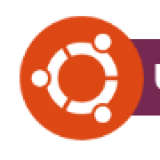Hello everyone, you can download Inkscape for Ubuntu and enjoy one of the best free, open-source vector graphic editors. It’s a fantastic alternative to programs like Adobe Illustrator and CorelDraw, with an active community constantly improving it.
We’ll cover some key features that make Inkscape a top choice for graphic design on Linux. I’ve been using it for over a year, and it’s been a reliable tool for all our design needs. We offer both Flatpak and Snap installation options below. Let me know what you think of Inkscape in the comments.
How to install Inkscape on Ubuntu
To install Shotcut on your Ubuntu system, just follow the instructions below:
- Choose where you want to download Shotcut from:
- Once downloaded, follow the provided installation instructions for your chosen format. After installation, launch Inkscape from your applications menu and start editing.
How to Install Inkscape via Terminal on Ubuntu
- Open your terminal.
- To install Inkscape via Snap, use this command:
sudo snap install inkscape
- Alternatively, to install Inkscape via Flatpak, use this command:
flatpak install flathub org.inkscape.Inkscape
- Once installed, you can launch Inkscape from your applications menu or by typing:
inkscape
What Is Inkscape About?
Inkscape is an Open Source vector graphics editor, with capabilities similar to Illustrator, CorelDraw, or Xara X, using the W3C standard Scalable Vector Graphics (SVG) file format.
Inkscape supports many advanced SVG features (markers, clones, alpha blending, etc.) and great care is taken in designing a streamlined interface. It is very easy to edit nodes, perform complex path operations, trace bitmaps and much more.
Inkscape Features:
- The Inkscape application is used across a wide variety of industries (marketing/branding, engineering/CAD, web graphics, cartooning) and individual uses.
- All Inkscape projects may be exported in formats friendly to web browsers or commercial printer rooms. It is cross-platform, which means it is easy to run on Windows, Mac OS X, and Linux distributions
- Drawing: pencil tool (freehand drawing with simple paths), pen tool (creating Bézier curves and straight lines), calligraphy tool (freehand drawing using filled paths representing calligraphic
- strokes)
- Shape tools: rectangles (may have rounded corners), ellipses (includes circles, arcs, segments), stars/polygons (can be rounded and/or randomized), spirals
- Text tool (multi-line text, full on-canvas editing)
- Embedded bitmaps (with a command to create and embed bitmaps of selected objects)
- Clones (“live” linked copies of objects), including a tool to create patterns and arrangements of clones
- Transformations (moving, scaling, rotating, skewing), both interactively and by specifying exact numeric values
- Z-order operations (raising and lowering)
- Grouping objects (“select in group” without ungrouping, or “enter the group” making it a temporary layer)
- Layers (lock and/or hide individual layers, rearrange them, etc; layers can form a hierarchical tree)
- Alignment and distribution commands
Inkscape Video Demo
Inkscape Screenshots
How to uninstall Inkscape from Ubuntu
- Open your terminal.
- If you installed Inkscape via Snap, use this command:
sudo snap remove inkscape
- If you installed Inkscape via Flatpak, use this command:
flatpak uninstall org.inkscape.Inkscape
- To remove any residual configuration files, run:
rm -rf ~/.config/inkscape
You might also want to check other photo editors on Ubuntu, best audio editors and the best Software for Ubuntu.
